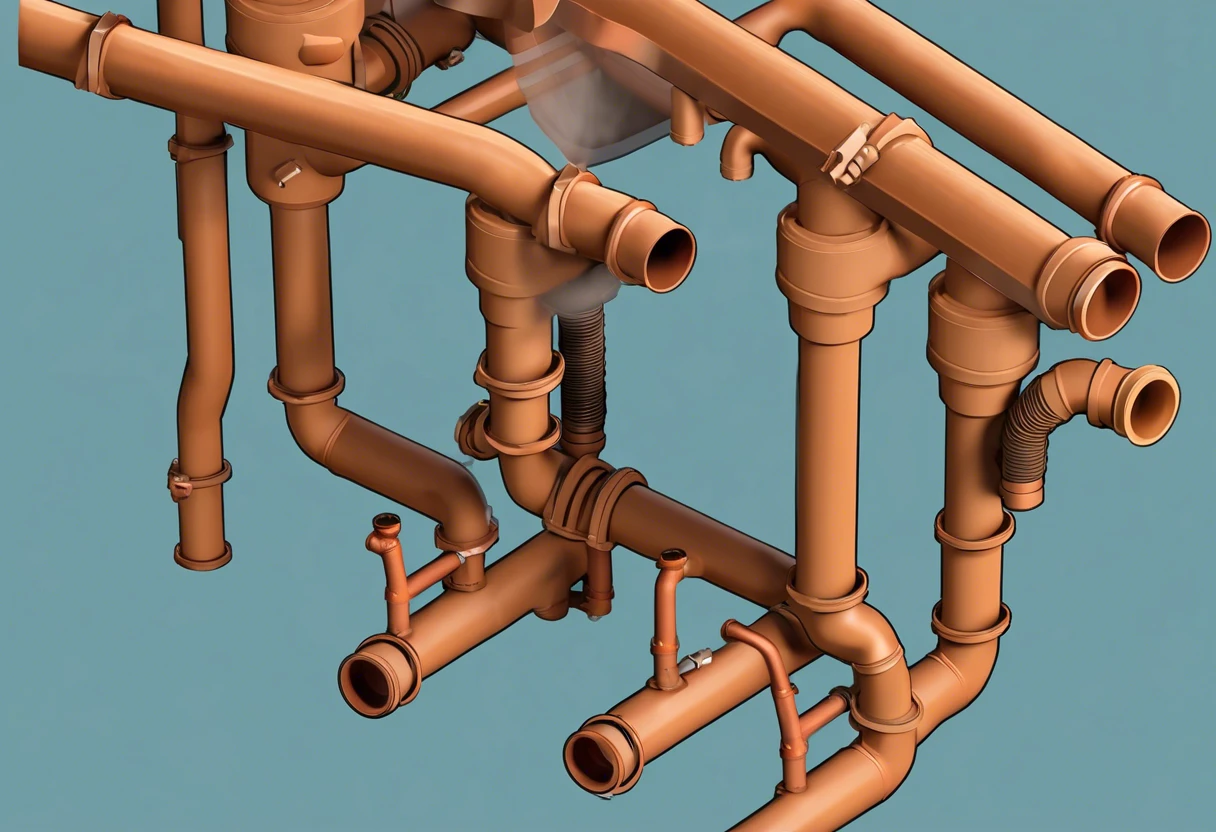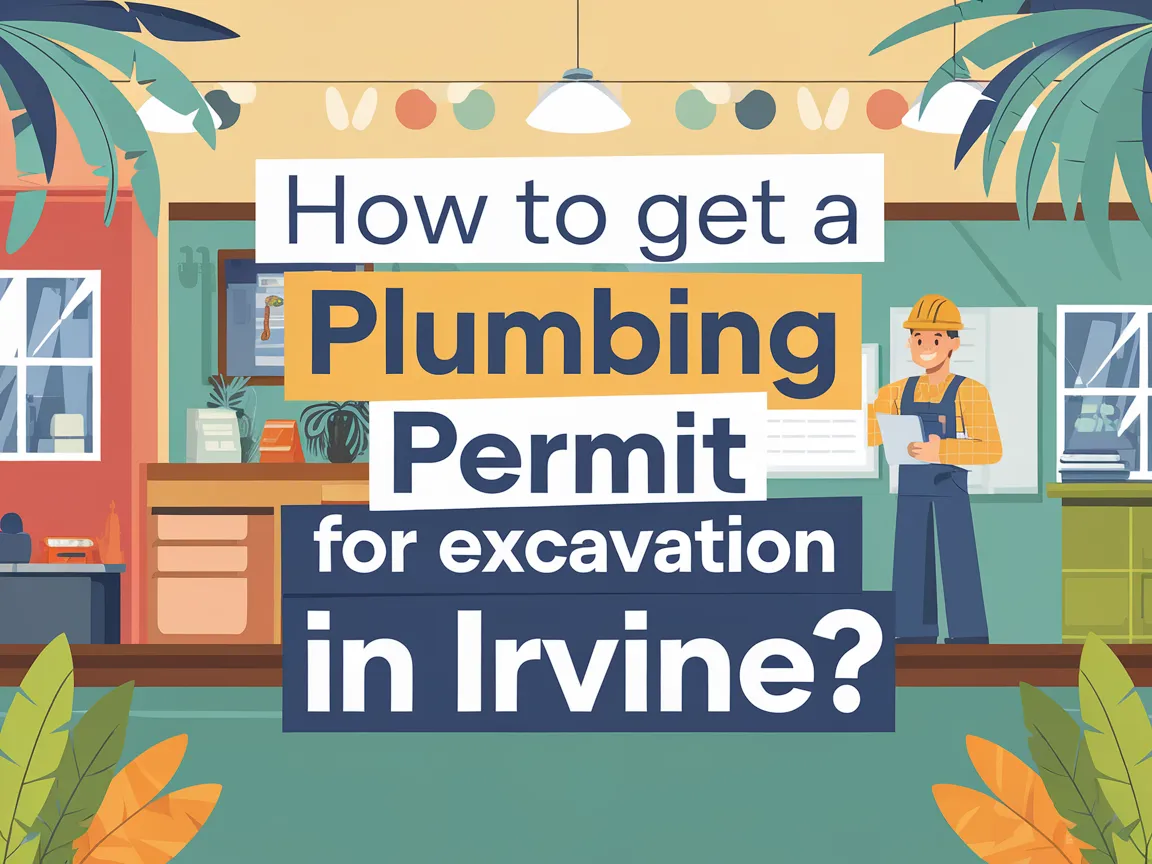Do Plumbing Vents Have to Go Through the Roof?
Last Updated: February 27, 2025
Plumbing vents are pipes that help air get into your plumbing system. They make sure that water and waste can flow smoothly without any blockages.
One of the most common plumbing dilemmas I’m asked about is do plumbing vents have to go through the roof. I’ve seen firsthand how this question comes up during projects, and I’m here to help you sort it all out.
This article will cover the importance of plumbing vents, key considerations before installation, proper installation techniques, costs involved, factors affecting venting requirements, special considerations for your home, and when to call a plumbing expert.
Table of Contents
- Do Plumbing Vents Have to Go Through the Roof?
- What Are Plumbing Vents?
- Before You Start: Key Considerations for Plumbing Vents
- How to Properly Install Plumbing Vents
- How Much Does It Cost for Plumbing Vent Installation?
- What Factors Affect Plumbing Venting Requirements?
- Special Considerations for Plumbing Vents
- When to Contact a Plumbing Expert for Venting Solutions
- Let’s Talk About Your Plumbing Questions
- Final Words on Plumbing Venting Solutions
- Additional Resources
Do Plumbing Vents Have to Go Through the Roof?
Yes, plumbing vents typically need to go through the roof to allow gas and odors to escape properly. This setup prevents harmful fumes from building up indoors. Local codes usually require this, so check with your inspector. If you’re dealing with older home plumbing systems, you might want to learn more about historical plumbing pipe materials.
What Are Plumbing Vents?
Plumbing vents are critical components in your home’s plumbing system. They allow air to enter the plumbing pipes, helping maintain proper pressure and prevent sewer gases from leaking into your home. If you’re looking to expand your knowledge about securing professional plumbing work, navigating plumbing contract opportunities can provide valuable technical insights for homeowners and contractors alike.
You might be surprised, but I actually used one for a repair in a neighbor’s house here in Irvine. Proper installation can get a bit technical—an ideal vent pipe is usually around 1.5 inches (38 Mm) in diameter—but the spacing is crucial! When thinking about whether plumbing vents have to go through the roof, many would argue they should. In places that follow codes like the CPC (California Plumbing Code), it often states vents must exit vertically through the roof. However, innovative solutions like air admittance valves (AAV) might offer alternatives that fit perfectly with PASF (Property Assessment & Sale Facilitation) standards for design intent. It’s all about ensuring safety while maximizing flexibility for your California build. If you’re preparing for seasonal changes, winterizing your plumbing system becomes essential for protecting your home’s infrastructure.
Before You Start: Key Considerations for Plumbing Vents
What do you need to get ready for plumbing vents, like, going through the roof?
- Drill Kit: You’ll want a drill kit that includes a 6-inch hole saw, such as the Ryobi 6-inch Bi-Metal Hole Saw. It’s essential for creating space through the roof for the vent.
- Flexible Vent Pipe: Grab a 3-inch to 4-inch flexible vent pipe, like Oatey’s PVC Vent Kit. It helps maximize airflow, keeping everything functional and compliant with local building codes.
- Sealant: You need silicone sealant, such as DAP 100% Silicone Sealant. This ensures a watertight finish at the penetration points, which is crucial during rainy seasons, especially here in the OC.
- Safety Gear: Invest in quality safety gear, like a hard hat and goggles, since you’re troubleshooting potential hazards while working above your head.
So far we covered key factors to consider before installing plumbing vents. Let’s look at properly installing plumbing vents next.
Also See: Do It Yourself Plumbing? Master Basics in Irvine!

How to Properly Install Plumbing Vents
Let’s dive into the steps to make sure your plumbing vents effectively reach the roof.
-
Assess Your Plumbing Layout
First things first, determine where your fixtures—sinks, toilets, and showers—are located, since they impact where you install your vents. Take a close look at your current piping system, searching for areas that need vent support, especially in those tight spaces. Interestingly, plumbing systems have evolved dramatically since the late 19th century, with early home designs featuring innovative residential plumbing techniques.
If your home’s drainage system doesn’t allow enough venting, you might need to angle the vents steeply for better airflow. From both the wins and oops moments, I’ve learned that a careful initial assessment can save you a ton of frustration later on.
-
Selecting the Right Venting Materials
Next up, choose between PVC, ABS, and cast iron for your venting materials based on your home’s plumbing type and local codes. Personally, I find PVC (Polyvinyl Chloride) the easiest to work with because it’s lightweight and flexible—especially here in OC.
For vent sizes, make sure to use a minimum diameter of 2 inches (51 Mm) for fixtures that have a 1.5-inch (38 Mm) drain. Got a toilet in the El Toro area? Then go for a 3-inch (76 Mm) vent size since all plumbing lines eventually connect back to the sewer—or as some say, the hood.
-
Planning the Vent Path
To keep air flowing freely, map out a route that goes directly from the fixture to your roof or an exterior wall. For each vent, aim for an upward slope of about 45 degrees to avoid clogs from biological material, especially during the hot summer months.
When you’re routing, make sure to check state and local plumbing codes regarding any restrictions on using sidewall vent terminations. Knowing these regulations will definitely help, especially when building out configurations similar to the irrigation setup in Peter’s house over in Tustin. If you’re new to plumbing installations, you might want to explore professional plumbing techniques to ensure compliance.
-
Installing the Vent Pipe
Now it’s time to install the PVC or ABS vent pipe. Join it from the fixtures, making sure each connection is secure and watertight. Use tees instead of elbow joints when changing direction—these choices help keep fog and drafts in check down the line, literally.
Allow for proper spacing as you work through whatever scenario you’re dealing with. I’ve seen how the windy Santa Ana conditions can mess with poorly built vent systems here in Irvine—so make it sturdy!
-
Complying With Local Building Codes
Don’t forget to research your local building codes that outline the required rooftop and vent clearance height around walls. I’ve examined the plumbing guidelines for Orange County, which typically require heights above 12-24 inches—so keep it compliant!
Your vent system should be no less than 6 inches above any roof slope. Remember, codes can vary, so think about the potential risks of poor installation—I’m talking about stuff like drainage issues or even critters finding their way into your pipes.
Pro Tip: Always double-check the plumbing vent size to reduce future blockages. This becomes even more crucial when you’re using angled routes where obstructions might lay ahead! If you’re curious about specific technical terminology like CTS in plumbing systems, plumbing professionals can clarify these details.
We’ve wrapped up the essentials of plumbing vent installation here. Let us turn our attention to the costs involved in installation.
How Much Does It Cost for Plumbing Vent Installation?
If you’re looking to install plumbing vents, you’re generally looking at costs ranging from about $500 to $2,000. This depends on factors like local labor rates and the complexity of the installation. From my experience cleaning up the mess in Old Town Irvine, budgeting around $1,200 is a solid starting point, especially for unexpected expenses like extra materials or repair work. Typically, the project can take a day or two, but watch out for hidden issues! You know how it is—things can get hella complicated once you start pulling stuff apart and see more clutter behind the walls! When planning your plumbing project, it’s crucial to understand how long PVC pipes last to ensure long-term durability.
Cost Breakdown Of Plumbing Vent Installation
| Description | Low Estimate ($) | High Estimate ($) |
|---|---|---|
| Materials (Vents, Piping) | 150 | 600 |
| Labor (Per Hour, Avg. Labor Rates in Irvine) | 350 | 1,200 |
| Permitting (If Necessary) | 50 | 200 |
| Unexpected Repair Work | 0 | 500 |
| Total Estimate | 500 | 2,000 |
We’ve wrapped up the costs associated with plumbing vent installation here. Let us turn our attention to factors affecting plumbing venting requirements.
What Factors Affect Plumbing Venting Requirements?
So, what factors determine if your plumbing vents can exit through the roof?
-
Building Codes: Local plumbing codes dictate venting requirements, so you typically need roof vents.
-
Home Layout: A sprawling Cali home may require multiple vents to effectively release sewer gases.
-
Vent Size: Larger systems usually need elevated exit points, like the roof, for better airflow.
-
Weather Considerations: In heavy rain conditions, wall vents can lead to issues like clogging, making a roof exit preferable.
You should now have a good understanding of plumbing venting requirements and their influencing factors. If you’re curious about the professional journey to becoming a skilled plumber, explore the fundamentals of plumbing basics. In the next part, we’ll discuss unique plumbing vent considerations.

Special Considerations for Plumbing Vents
This section discusses key factors to keep in mind when dealing with plumbing vents.
- Height Requirement: Vents must extend at least 12 inches (30 Cm) above the roofline to prevent overflow and ensure proper air circulation.
- Clearing Angles: Make sure vents are 10 feet (3 M) away from any open windows or doors to fend off foul odors.
- Vent Size Variation: Use a minimum of 2 inches (5.08 Cm) in diameter for vents in a single-family home. Larger homes may require a 3-inch (7.62 Cm) vent diameter.
- Multiple Branches: When installing vents for several fixtures, connect them using proper angles (45 Degrees or Less) to maintain effective airflow.
- State Codes: Always refer to local plumbing codes in Irvine or California to ensure compliance; for elevated structures, additional considerations may apply.
When to Contact a Plumbing Expert for Venting Solutions
If you’ve ever found yourself staring at your plumbing vents and wondering, “Do plumbing vents have to go through the roof?” you’re not alone. It’s time to reach out to a pro when your venting issues affect water flow or create odors in your home. Look for an expert who’s experienced in local building codes and has a solid track record in vent installation.
I’ve seen some folks try to DIY their vent solutions, and they often run into issues later on. So, make sure to choose someone who appreciates every little detail and doesn’t mind answering your questions. One thing I’ve noticed over the years is the importance of finding someone friendly; interactions with homeowners should feel smooth and comfy. Watch out for any expert with hidden fees—that’s a huge red flag! Save yourself future headaches by selecting the right one upfront.
Let’s Talk About Your Plumbing Questions
Do Plumbing Vents Need to Go to the Roof?
Absolutely! Plumbing vents usually have to go to the roof. This helps ensure any gases or odors from your plumbing system are safely released above your home. It protects indoor air quality, and let’s be real—no one wants stinky smells creeping back inside!
Can You Run a Plumbing Vent Out a Wall?
You can run that plumbing vent out a wall, but it’s gotta meet some specific conditions. Generally, this works better in areas where overhead air flow isn’t a big deal. Plus, don’t forget to check local codes; you want to avoid any nasty surprises later on. If you’re unsure about your specific plumbing layout, you might want to locate your home’s plumbing diagram.
How to Vent Plumbing Without Going Through the Roof?
Ever heard of air admittance valves (Aavs)? They’re a game changer! These nifty devices allow air into your plumbing system when there’s negative pressure but stay closed under normal conditions. It’s like having your cake and eating it too—no odors in your living space! If you’re experiencing unexpected pressure drops, you might want to check your plumbing system’s air circulation.
What Are the Rules for Plumbing Venting?
The rules can vary a bit, but there are some solid basics. For starters, your vent should rise vertically at least 12 inches above the highest fixture. It also needs to be properly sloped. Trust me, keeping air flowing prevents siphoning and drain issues, and you’ll thank yourself later when things flow smoothly!
Can a Plumbing Vent Be Too Large?
Good news, a plumbing vent can’t be too large! However, it can be undersized. Make sure the diameter meets the minimum requirements for your fixtures — usually around 1.5 inches for brackets. This ensures effective venting, steering clear of clogs and odors. If you’re looking to advance your plumbing skills professionally, you might want to explore obtaining a C36 plumbing license.
What Happens if Plumbing Isn’t Vented Properly?
Improper venting? That’s trouble! You could face backflows, slow drains, or even sewer gas odors invading your home. Not to mention, it can lead to costly repairs. So yeah, proper vent sizing and positioning are critical to keeping your plumbing in check and you happy! When dealing with complex plumbing issues, it helps to know who’s responsible for plumbing repairs.
Final Words on Plumbing Venting Solutions
We are almost done. We covered plumbing vents, key considerations for proper installation, costs involved, factors affecting venting requirements, special aspects to consider, and when to reach out to plumbing experts for solutions.
To wrap it up, plumbing vents don’t always have to go through the roof, and there can be alternative venting solutions. Regular maintenance can help you save time and money. If you need assistance or have questions, I’m here to support you with all your plumbing needs.
For further insights and tips, check out Irvine Plumbers.
Additional Resources
- Kardon, R., Hansen, D., & Casey, M. (2015). Code Check Plumbing: A Field Guide to the Plumbing Codes. Taunton Press.
- Running Plumbing Vents Through Walls vs. Roofs – GreenBuildingAdvisor
- drain – Does a plumbing vent need to penetrate the roof? (Can it penetrate a wall?) – Home Improvement Stack Exchange


